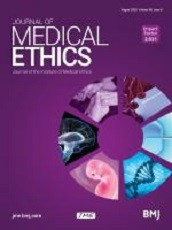Florencia Luna

Abstract
Doing ‘good medical ethics’ requires acknowledgment that it is often practised in non-ideal circumstances! In this article I present the distinction between ideal theory (IT) and non-ideal theory (NIT). I show how IT may not be the best solution to tackle problems in non-ideal contexts. I sketch a NIT framework as a useful tool for bioethics and medical ethics and explain how NITs can contribute to policy design in non-ideal circumstances. Different NITs can coexist and be evaluated vis-à-vis the IT. Additionally, I address what an individual doctor ought to do in this non-ideal context with the view that knowledge of NITs can facilitate the decision-making process. NITs help conceptualise problems faced in the context of non-compliance and scarcity in a better and more realistic way. Deciding which policy is optimal in such contexts may influence physicians’ decisions regarding their patients. Thus, this analysis-usually identified only with policy making-may also be relevant to medical ethics. Finally, I recognise that this is merely a first step in an unexplored but fundamental theoretical area and that more work needs to be done.
Luna F. Medical ethics and more: ideal theories, non-ideal theories and conscientious objection. J Med Ethics. 2015 Jan;41(1):129-33. doi: 10.1136/medethics-2014-102295. PMID: 25516954.